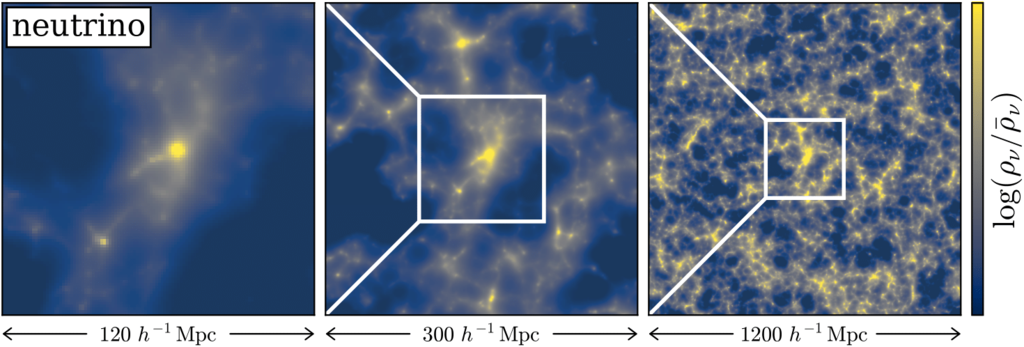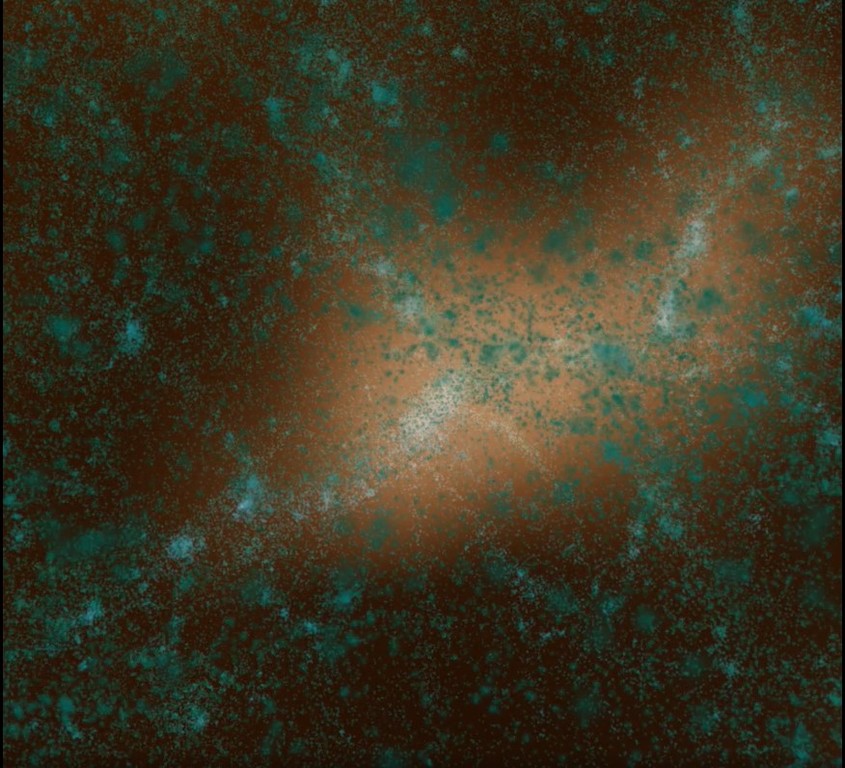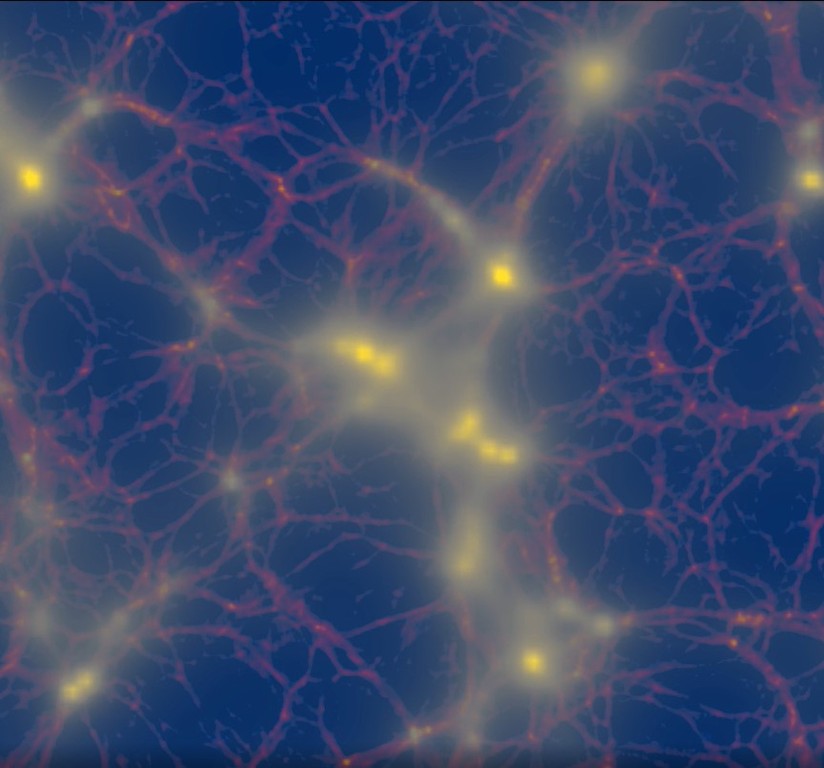・Proposed a completely new approach that explicitly follows the dynamics of massive neutrinos by solving the time evolution of their distribution function with the finite volume method. By representing the massive neutrino as a continuous medium in the six-dimensional phase space, the approach enables us to reproduce the neutrino distribution without shot noise, even when the velocity distribution has a broad, extended tail.
・Using a series of hybrid Vlasov/N-body simulation
・Efficient SIMD Vectorization in Vlasov Simulation ~load and transpose (LAT) method~
Abstract
We report a Vlasov simulation of cosmic relic neutrinos combined with N-body simulation of cold dark matter in the context of large-scale structure formation in the Universe performed on Fugaku supercomputer. Gravitational dynamics of the neutrinos is followed, for the first time, by directly integrating the Vlasov equation in six-dimensional phase space. Our largest simulation combines the Vlasov simulation on 400 trillion grids and 330 billion-body calculations in a self-consistent manner, and reproduces accurately the nonlinear dynamics of neutrinos in the Universe. The novel high-order Vlasov solver is optimized by combining an array of state-of-the-art numerical schemes and fully utilizing the SIMD instructions on the A64FX processors. Time-To-Solution of our simulation is an order of magnitude shorter than the largest N-body simulations. The performance scales excellently with up to 147,456 nodes (7 million CPU cores) on Fugaku; the weak and strong scaling efficiencies are 82% – 96% and 82% – 93%, respectively.
Benefit
The performance achieves 12-15% of the theoretical peak performance in single-precision arithmetics.
Market Application
・Electrostatic and magnetized plasma phenomena and selfgravitating systems
・Fusion plasma
・Space weather prediction
Publications
・https://arxiv.org/abs/2110.15867
・https://dl.acm.org/doi/abs/10.1145/3458817.3487401
Other
・https://www.tsukuba.ac.jp/en/research-news/20211028141500.html




